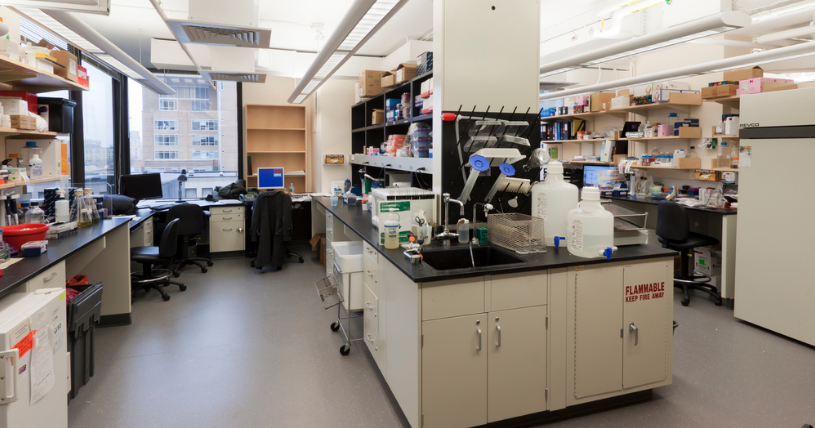
When starting a new lab, it’s wise to take a page out of Steven Covey’s landmark book from 1989, The 7 Habits of Highly Effective People and “begin with the end in mind.”
What Covey means here is this: before you start your project— in this case building or designing a new laboratory— think about what its function and purpose are going to be when you’re finished. Answering those questions will give you a roadmap for everything else.
For example, is this a research lab? A cell culture lab may need sanitized areas, autoclaves, freezers, and incubators. Analytical labs require efficient air-conditioning and controllable humidity. If used for teaching purposes, include a whiteboard, a projector, storage space for backpacks and supplies, and writing surfaces/desks.
Laboratory Equipment
This will likely be your biggest expense, so don’t take it lightly. Start with a detailed list of what you are going to fulfill the purpose of your new lab. Next, inventory what might already be available to you somewhere else in your current facilities. Decide if it makes sense for you to buy, rent, or lease. If you decide to buy, you can sometimes find discounts available only to new, start-up labs. Used lab equipment from a reputable dealer is also a great way to save money.
Layout
Once you have your vision and obtained the equipment needed to bring it to fruition, it’s time to lay out the physical plant. Start by laying out your lab into different “zones”, each with varying degrees and types of hazards. Allocate various functions into the different zones so that the equipment in each is easily accessible but does not impede the flow of traffic. Speaking of access, be sure that lab entry is restricted to only authorized personnel. And finally, be sure there are multiple exits to be sure everyone is as safe as possible in the event of an emergency such as fire or building evacuation.
Safety
In addition to basics like fire extinguishers, make sure you have fire blankets, emergency showers (with easy-reach handles), eye-wash stations, gloves, masks, and any other task-specific safety equipment that might be needed. Require all staff to complete a compulsory safety training program that identifies potential hazards and appropriate procedures to address them.
Paperwork
There’s a lot of DIY involved in setting up a new lab, but there will also be some steps for which you’d be better served to consult a senior PI or mentor to make sure your start-up is in compliance. At the top of the list will likely be a HIRA (Hazard Identification and Risk Assessment). If your lab will be conducting tests on animals, you will need to obtain a license for animal testing and submit a research proposal to the applicable, regional regulatory bodies for approval. Depending on the type of reagents you use, you will also need to file forms with various regulatory agencies, especially if you use infectious agents or biological toxins.
Biosafety
Biosafety involves the measures taken when handling biological organisms/materials that are known to pose a threat to human health. Containment of the potentially hazardous organism or material in an emergency to reduce the number of exposures is critical. Your lab will need to demonstrate the availability and efficient implementation of both primary and secondary barriers.

